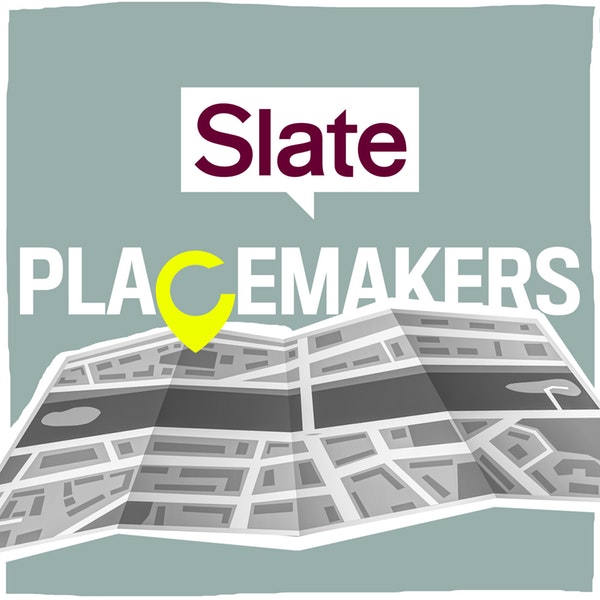

Long before the Black Lives Matter movement swept the U.S., Dallas’ police chief tried to defuse the anger and mistrust between minority communities and police. His reforms made an impact. The number of people killed in confrontations with police fell, just as crime fell. But Dallas was still torn apart by racial hate last summer, leaving five officers dead and the city in shock. It fell on the police chief to bring people back together in the aftermath.
Download episode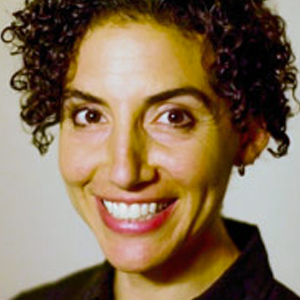
Rebecca Sheir has been a host and reporter on All Things Considered, Morning Edition, Marketplace, Here and Now, The Splendid Table, and the Alaska Public Radio Network. Follow her on Twitter.
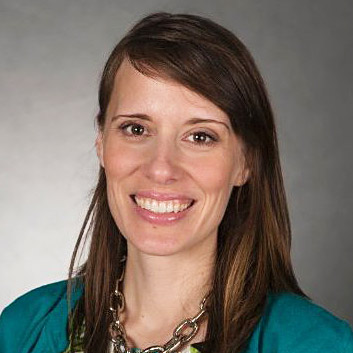
Dianna Douglas is a Placemakers producer. Most recently, she was a reporter at North Texas Public Radio in Dallas. She previously worked as a producer at NPR, where she served as the bureau chief in Baghdad, and embedded with the U.S. Army in Kandahar.
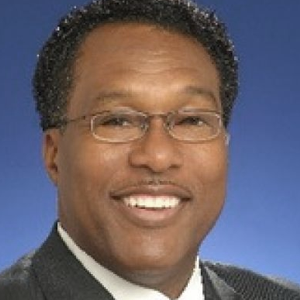
Dwaine Caraway is a former Dallas city council member and mayor pro tem.
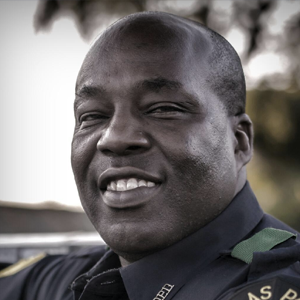
Sheldon Smith is a sergeant in the Dallas Police Department and chief of staff of the Black Police Association of Greater Dallas.
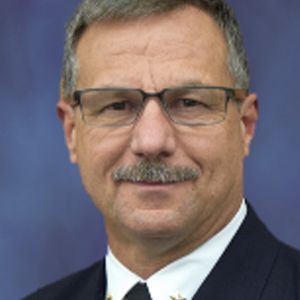
Jeffrey Cotner is the Dallas Police Department’s deputy chief, in charge of the police academy and officer training.
Rebecca Sheir: Unfortunately, all too often in the news, we’ve been hearing stories about tension and mistrust between police, and the communities they serve. Tension and mistrust that have all too often led to shootings of unarmed civilians—like Philando Castile, a black man killed in a traffic stop outside St. Paul, Minnesota, this past summer.
As we got ready to record this episode, we heard news that the police officer responsible for shooting Castile was charged: manslaughter and two felony counts of dangerous discharge of a firearm. Castile’s fiancée had turned on her cellphone camera and streamed the horrifying aftermath of his death, live on Facebook. That police shooting, and so many others, sparked protests across the country in 2016.
By far the most memorable, and awful, of these protests happened that same week in Dallas. You no doubt remember what happened there: A man killed four officers from the Dallas Police Department and a transit police officer. Nine other officers were wounded. It was a horrible moment that reverberates still, and we’ll get to that in today’s episode.
But the real story in Dallas, behind that violent headline? Locals say, it’s how much worse things could have been. Those officer shootings came at a time when Dallas police had been working for years to build a better relationship with minority communities, after decades of scandal.
I’m Rebecca Sheir. From Slate magazine, this is Placemakers: stories about the spaces we inhabit, and the people who shape them.
Today: A police chief tries to attack a culture of impunity and racism in his department, a culture that led to a number of scandals through the years.
Here’s a couple, just for context. Back in 2002, officers in the narcotics unit got busted for planting bags of white powder on poor Hispanics, then arresting those individuals for cocaine possession. The powder was actually ground-up sheetrock.
Or how about what’s probably the most notorious Dallas police story: A cop played Russian roulette with a teenager who was handcuffed in the back of a squad car and shot him dead.
So, in 2010, when Dallas police appointed a new chief from within their ranks, they needed a reformer. And David Brown knew he was stepping into a volatile situation.
Brown: It’s likely we would have been Ferguson before Ferguson was Ferguson.
Sheir: As if to make matters more dramatic, David Brown faced a personal tragedy soon after he was sworn in. In a suburb outside Dallas, his own son shot and killed a police officer, plus another man. A police confrontation ensued, and David Brown Junior, who had bipolar disorder, was fatally wounded. Chief Brown met with the families of the people his son had killed, even as his own family mourned their loss.
David Brown’s early days as police chief came at a rough time for his department. In fact, things were so bad that the richest neighborhoods in town wouldn’t even accept cops from Dallas. Instead, they hired their own.
So Chief Brown had quite the job on his hands, all the while struggling to uphold his identity as an officer of the law, and as a black man.
Placemakers producer Dianna Douglas takes us to Texas, and one of the many days when David Brown’s identities were put to the test.
Dianna Douglas: Two years into David Brown’s tenure as police chief, officers were shooting someone every few weeks. Then, on a blazing hot July day in 2012, officers responded to a drug call in the Dixon Circle neighborhood. Within an hour, the body of James Harper, an unarmed black man, was lying in horse manure in someone’s backyard.
Dwaine Caraway’s phone started ringing right away. Caraway was a city councilman from South Dallas, and acting as mayor pro-tem at the time.
Dwaine Caraway: You’ve got helicopters, you’ve got police in riot gear with shields and automatic weapons, and folks lined up, you’ve got a screaming community. Anti-police. And the only word was that he got shot in the back, and the police shot him in the back, it’s unfair.
Douglas: To Caraway, it sounded like Dixon Circle was about to blow. He tried to piece together what had happened. James Harper had been a drug dealer. The police had responded to a tip about drug dealing in the area, and Harper had run. An officer chased him, through backyards, over fences, and into a horse pen. Then they got into a fight.
Caraway: The way the family who lives there says that he was getting the best of the cop. Let him have it. The cop, the way they tell it, was growing tired and then was in fear. I guess I would have been in fear too. He’s in a cage, pretty much. Just two of you guys. Only one of them got a gun. Unfortunately that’s when the police discharged his firearm.
Douglas: If Harper had scaled that fence, he would have gotten away, into a floodplain that’s a huge wilderness in the middle of the city. Some people said Harper tried to climb the fence and was shot in the back. But who knows? The only thing people in the neighborhood knew for sure was that yet another unarmed black man had been shot dead. Caraway surveyed the gathering crowd and didn’t like what he saw.
Caraway: Where we were, there were no streetlights. It didn’t look like this thing was about to come to an end anytime soon. I’m advancing my thoughts to say, “We’ve got to put an end to this.” Because when it get dark right here, with as wild as this appeared to be getting, we’re going to have a real problem. We won’t be able to see, if somebody’s throwing bottles, rocks, or shooting, or whatever.
Douglas: Caraway saw James Harper’s mother on the street, asking a line of officers in a bulletproof body armor, helmets, and riot shields to see her son. Her suffering was making the crowd grow more agitated. Here’s an iPhone video of Sheila Harper that day.
Douglas: Police moved the body, thinking that a quick resolution would help calm the crowd. But people kept coming to Dixon Circle, from all over the city, as rumors spread on social media. Reporters and news cameras showed up, to see what would happen next. Caraway convinced police to let Sheila Harper go down to the coroner’s office.
Caraway: So y’all can see the body and identify, and do all of that. So we arrange for some cars, to get the family into these cars, I think it was a constable car, police car.
Douglas: Without Sheila Harper, the crowd eventually dispersed. No cars were flipped over and no buildings were torched. Chief David Brown hadn’t been at Dixon Circle that night, but it was up to him to start the reckoning. There was a long internal investigation of the shooting, which in the end cleared the officer of wrongdoing. Brown was frank and open about the investigation with local media, using news conferences to talk with the public.
Brown: People don’t have short memories. They remember how their loved one was treated in a wrong way by the police department.
Douglas: David Brown has a meticulously shaved head and wears dark rimmed eyeglasses. He looks deeply serious, and always crisp in his blue police uniform. Samuel L. Jackson would be the obvious choice to play him in the movie version. Brown was a police officer in Dallas for 27 years before becoming the chief. Chief Brown told North Texas Public Radio that meeting with the families of people who his officers have killed is sometimes a necessary part of his job, or else he’ll wind up encountering them on protest lines.
Brown: You don’t say much. You listen a lot. They want to be heard, they don’t want to be talked to as much. And sometimes they’re shouting at you.
Douglas: Brown chief promised major reforms of his department after the Dixon Circle shooting. And he promised the Dixon Circle neighborhood even more: a special team of community officers.
Sheldon Smith: The community was really still in an uproar because of that death. As a police department, we knew that we had to do whatever we could to try to gain the trust again from the citizens.
Douglas: Enter Sgt. Sheldon Smith. He had been a beat cop in Dixon Circle in the early ’90s and cared deeply about the neighborhood. He was already running a police athletic league in his downtime, coaching kids in basketball, sometimes helping them with homework. Soon after the shooting, he approached the drug boys in Dixon Circle with a proposition.
Smith: I let them know that, “I’m not here to put you in jail. I’m not here to search you for drugs or check you for warrants.” I asked them, “What could I do in order to get participation in playing basketball at the Larry Johnson Rec Center,” which was right down the street.
Douglas: Sgt. Smith repeated his question—where can I find some people to play basketball with me and my officers? Sure enough, a few kids started coming after school to play ball with the cops.
Smith’s little basketball league with the young men in Dixon Circle grew into an entire youth outreach unit inside the police department.
Chief David Brown came to shoot hoops in Dixon Circle a few months after the shooting. Despite all the PR officers and reporters and cameras there, he managed to sink a few.
Basketball is fun, but it was not going to solve the problems between the police department and poor neighborhoods. Brown started making internal changes to his department after the shooting in Dixon Circle. Among them—no more chasing known suspects who could just as easily be found later. Every year, officers undergo training on de-escalating conflicts. Jeffrey Cotner is a deputy police chief, in charge of these training sessions.
Cotner: In policing, you have that long to make this decision. You’re starting in body, “Hey, wait a minute. What’s the true value of running back there by yourself, leaping over fences?” Oh, it’s cool and it’s TV worthy, but what do we really accomplish?
Douglas: Dallas police officers now also get training in how to handle people with mental illnesses. They learn about special considerations in dealing with people who are Latino, black, Asian, or LGBT. And they go through a class in how to identify their own biases. It’s called “fair and impartial policing.”
Cotner: Far different than explicit bias where you’re clearly a racist, .. This is more of that unconscious thing that’s part of your decision-making model. That fair and impartial policing that we teach here is a way for us all to understand that and how it influences all of our decisions, not just our contact with the public, but our internal contacts and our decisions that we make internally.
Douglas: Cotner’s boss David Brown made another change in the department—toward more transparency.
Cotner: Chief Brown said, “Let’s publish all our shooters,” and I was the commander of the crime section. The officer-involved shooting team was underneath my command, and so I had all the data.
Douglas: Cotner had information on hundreds of police shootings in Dallas. Some were horrifying. An unarmed, mentally ill person in a wheelchair. A man sitting in a parked car, no weapon. Brown fired quite a few officers. He started to rile the police union. Especially when he wanted to publish the names of the officers involved in a police shooting.
Cotner: We give them a chance to talk to their family and clean up their social media, but then we put their name out there.
Douglas: By 2013, the number of citizens killed by police officers in Dallas began to fall. The crime rate also fell, as it had all over the country.
But what looked like success from the outside felt like a disaster to many inside Brown’s department. Critics especially hated his staffing priorities: Brown gave dozens of officers to the police athletic league, to work in schools, and to other community policing projects. But he pulled a lot of offers from the gang unit, the DWI unit, the traffic unit. Even the Black Police Officers Association asked for David Brown’s resignation. They said that the atmosphere inside the department was one of vengeance, distrust, and retaliation. He was losing his rank and file in his zeal to change the department.
Sheir: So by this point, David Brown had been chief of the Dallas Police Department for nearly six years. Most big-city police chiefs last only two-and-a-half to three. So it was normal for Brown to be thinking about moving on, even though his controversial reforms seemed to be working.
But then, one night, everything was put to the test.
As we’ll hear after the break, it was another hot July day in Dallas when David Brown found himself at the epicenter of a national tragedy.
Sheir: From Slate magazine, it’s Placemakers. I’m Rebecca Sheir. Over the past few years, police shootings of black men have infuriated and horrified the country. The summer of 2016 saw major protests after videos showed black men being fatally shot by police in Louisiana and Minnesota. As with other cities in the country, Black Lives Matter activists in Texas marched for criminal justice reforms, calling for better training of officers, more prosecutions of officers who kill, and the demilitarization of police equipment.
Most of the protests, were peaceful. Especially the protest through downtown Dallas on July 7, 2016. Dallas police had plenty of advance notice that activists wanted to march. Some officers were in plain clothes. Some posed for selfies with the protesters. Their job, just like at every other parade, was to keep cars and people apart, and to keep everybody moving along.
And then, two hours into the protest, bullets flew into the crowd. Dianna Douglas picks up our story.
Douglas: Right as the march got close to the plaza where John F. Kennedy was shot, a 25-year-old black man named Micah Johnson aimed an assault rifle at a Dallas police officer. This being Texas, there were many in the crowd carrying assault rifles. So Johnson didn’t attract much attention. He was an army reservist and veteran of the war in Afghanistan. He opened fire and killed five officers and injured nine others. The bullets pierced the vests that the police were wearing. He also shot and wounded two other people. Then he ran into a community college, and barricaded himself at the end of a long hallway.
Brown: We tried to negotiate for several hours. Negotiations broke down. We exchanged gunfire with the suspect.
Douglas: Chief Brown says Johnson told the police that he wanted to kill white people, especially white police officers. Brown was getting updates from the hospitals about who among his injured officers had died. He says he couldn’t send an officer down that hallway, and risk losing another one.
Brown: “We saw no other option but to use our bomb robot.”
Douglas: They put explosives on an 800-pound robot. It rolled down the hall, and exploded when it reached Johnson. It was the first time American police had used such a device to kill someone. Brown spoke to journalists and the public later that day. He became a pastor and anchor to the stunned and grief-stricken city.
Brown: We are heartbroken. All I know is that this must stop. This divisiveness between our police and our citizens.
Douglas: To understand why this tone was so remarkable in Dallas during that long summer of racial tensions, compare Brown’s gentleness to the reaction of the lieutenant governor of Texas, Dan Patrick. Here he is on Fox News the same day.
Patrick: All those protesters last night, they ran the other way expecting the men and women in blue to protect them. What hypocrites!
Douglas: Plenty of people were calling for a race war. They criticized President Obama, Black Lives Matter, anyone who protested against the police. Brown wasn’t looking for vengeance. He was looking for peace.
Brown: Please, we need your support. So please help us comfort and support the grieving officers’ families.
Sheldon Smith: He was the person that we needed to help us get through the tragedy of July 7. He did an outstanding job of doing that. His communication with the world, not just with the city of Dallas, but his communication with the world, was great, was absolutely great. The officers needed it, the citizens needed it, and he shined at that moment, and we needed for him to shine.
Douglas: That’s police sergeant Sheldon Smith, the guy who set up the basketball games in Dixon circle. He says that when Chief Brown asked for calm, he brought out the best of Dallas.
Ever since those five officers were killed on July 7, police officers in Dallas can’t pay for their meals at restaurants. They get stopped on the street for hugs. Trees all over the city are wrapped in blue ribbons.
Smith: I think that the signatures that the citizen leave, and the hand prints that the little kids put on paper, that’s all sincere. It’s so sincere, and we just, that was a tough day, tough time. That was super tough, super tough, but they made it better, they made us feel appreciated. They still do.
Douglas: I visited Dallas three months after the shootings—police officers still teared up when talking about that night. Many in the national media pointed out the sad irony that a police department that had worked so hard on improving relationships with black communities would become the target that night. Brown never tried to blame the protesters for the murders. Instead, he had a message for them.
Brown: We’re hiring. We’re hiring. Get off that protest line and put an application in. We’ll put you in your neighborhood and help you resolve some of the problems that you’re protesting about.
Douglas: This rubbed at least one person the wrong way. Dominique Alexander is President of the Next Generation Action Network, organizer of the protest on July 7. He has been pushing for police reform in Dallas for a couple of years now. He says Brown’s offer to turn protesters into police officers is wrong headed.
Alexander: I think it’s a very ignorant statement because first off, we’re not coming after the badge or the individual inside of the uniform. We’re coming after the systematic problems that’s clearly broken in law enforcement across our country. We’re talking about the broken internal affairs, the transparency.
Douglas: Because of his reaction to the murders of his own officers, David Brown had become the most famous policeman in the country overnight. He shared the stage with Presidents Bush and Obama during the memorial services for the fallen officers. He was subject of glowing profiles in the New York Times and Washington Post. “David Brown for president” spread across Twitter.
But the attention may have served to paper over a lot of troubles that remain in the DPD. Dallas police officers have low pay, even compared to the suburbs, and officers are leaving the force in droves. Crime had started to rise again in Dallas
Brown, in his moment in the limelight, with all those microphones on, had a bigger message about how we use our urban police.
Brown: We’re asking cops to do too much in this country. We are. We’re just asking us to do too much. Every societal failure, we put it off on the cops to solve. Not enough mental health funding. Let the cop handle it. Not enough drug addiction funding. Let’s give it to the cops. Here in Dallas, we’ve got a loose dog problem. Let’s have the cops chase loose dogs. You know, schools fail. Give it to the cops.
Douglas: A few months after the July 7 shootings, Brown announced he was retiring. The police department was still numb with grief, but Brown said it was time for him to move on, after 33 years on the force.
Brown: I start hearing whispers after July 7 of me being untouchable, of me being powerful now, since I had national notoriety. My ability to serve was uncomfortable to me. The idea of being untouchable has not felt right to me.
Douglas: I asked a couple of people what Brown is up to now—running for national office, writing a book, off to Hollywood, Brown was pointedly quiet on the subject when he announced his retirement.
Brown: As soon as I make a decision, I’m sure you all will know what direction I will go in next. No matter how you pry, no matter how you ask that question, my answer is going to be, “that’s between me and my baby.” And unless you’re my new baby, you’re not getting that answer.
Douglas: David Brown got a Viking funeral upon retirement, although plenty of people quietly rejoiced to see him go. Dominique Alexander, still organizing protests in Dallas against police misbehavior, said he, for one, is ready for a new leader.
Alexander: I have asked for the resignation of Chief David Brown over five times. When July 7 came, everybody got this illusion that, “Oh, Chief David Brown’s the hero.”
Douglas: He thinks the narrative about Dallas being a model of police reform is dead wrong.
Alexander: It misleads people to think that the community policing programs that he’s doing are right. They’re not right, because they’re not being effective.
Douglas: As the dust from July 7 has settled, and David Brown rides off into the sunset, Dallas PD is coming to grips with an unpleasant fact: changing a major department of a large city takes decades.
At the police academy in South Dallas, recruits are serious and somber about the police department that they’re joining. They’re a diverse group, though not as diverse as the city they’ll work in, with large black and Latino populations. Shanee Clewis says she’s as surprised as anyone to find herself in the police academy, especially as a black woman.
Clewis: Growing up law enforcement was basically stay away. Do what you gotta do. Do the right thing to not engage with law enforcement basically. We really didn’t have too much run-ins with them.
Douglas: She’s from Houston. Her brother joined the police department, and convinced her to give it a try.
Shanee Clewis: In the time that we’re in, where it’s a power struggle between law enforcement and the citizens I just felt like this would be the time. You know go out and be the change that you want to see. So that was a big thing that pushed me further into law enforcement.
Douglas: Clewis will get 37 weeks of training before getting a badge; on firearms and Tasers, on handling people on drugs, on making a routine traffic stop. It’s one of the longest police academies in the U.S. She’ll also get training specifically in a way that David Brown wanted: on fair and impartial policing in a multicultural society.
Smith: What’s going on man?
Douglas: Back in Dixon Circle, Police Sgt. Sheldon Smith says he’s been trying to get creative. He and some other officers now do role-playing sessions for young black men on what to do during a traffic stop.
Smith: “Now, kid, I’m the driver, you’re the police officer. You walk up on me now, and you tell me if you feel comfortable with me reaching into the glove compartment, or me reaching underneath the seat to get whatever. You feel comfortable with that? You can’t see my hands, or me playing the music, and you won’t turn it down. You feel comfortable with that, when you’re trying to communicate with me?” We let them see it from a different perspective, with hopes, that when they do get stopped by the police, they’ll know exactly what to do, and they’ll feel a little bit more comfortable.
Douglas: Smith hopes that this simple class will save some young lives. As police chief, David Brown had power to encourage this kind of innovation, or to clamp down on it. He created a department where police officers are expected to be out in front of their community.
Douglas: In Dixon Circle today, where an unarmed black man was shot and killed by police four years ago, people still deal drugs in the open. Driving through the neighborhood, Smith pointed to a group of men standing outside a convenience mart.
Smith: Somebody’s holding dope right there. Somebody’s selling dope right there. You see how they looking at us? They don’t know if I’m going to zip in there, whip in there, and you know. They don’t know. They’re not just sitting in front of a store to be sitting in front of a store. Nobody sits in front of a store.
Douglas: Police respond to 911 calls here in Dixon Circle, occasionally, but they stopped playing basketball with the kids a long time ago, to work more in other neighborhoods and on other programs.
Chickens and stray dogs wander through the yards. I saw no white people during our drive through Dixon Circle. In fact, I lived in Dallas for a year and never had any reason to go to the neighborhood, never knew anyone from there, honestly never even heard of it, or the shooting that could have burned Dallas down four years ago.
But even in this poor neighborhood with a long history of mistrust of police, wide blue ribbons are wrapped around trees.
Sheir: Despite David Brown’s efforts, anger and recriminations have been echoing after the shootings of July 7, and reaching a national stage. Just as we were finishing up this episode, the AP reported that the father of one of the slain officers is suing Black Lives Matter, the Nation of Islam, and some other groups for inciting—quote—“a war on police.”
Before he left office, Chief David Brown begged that the incident not be politicized. But like many things in our political landscape right now, that center is hard to hold.
Our story today was reported by Dianna Douglas. Placemakers is a production of Slate magazine and is produced by Mia Lobel, Dianna Douglas, and Michael Vuolo, and edited by Julia Barton. Our researcher is Matthew Schwartz. Eric Shimelonis does our mixing and musical scoring. Our theme was composed by Robin Hilton. Steve Lickteig is our executive producer. I’m Rebecca Sheir.
For more information about today’s show and other episodes of Placemakers, go to Slate.com/placemakers. You can drop us a line at placemakers@slate.com. And follow us on Twitter; our handle is @SlatePlacemaker.
Coming up next time on Placemakers: In the 19th century, a trained architect named George Leslie wasn’t just a placemaker, he was a placebreaker:
Man: “His reputation within the criminal world grew to such a point that he would take something in the vicinity of a $20,000 consultant’s fee just to go in, lay out plans and devise ways to rob banks.”
Sheir: The unholy relationship between burglary and the built environment. That’s on the next episode of Placemakers.